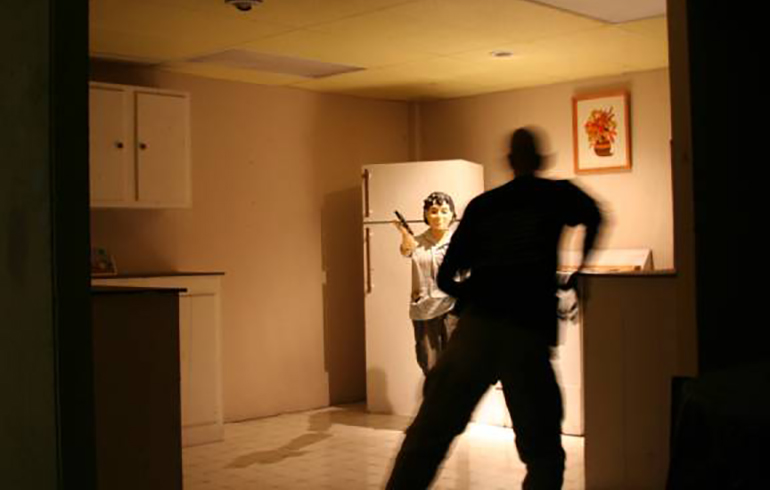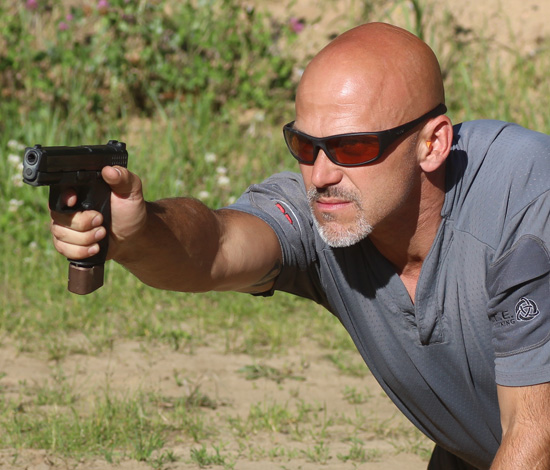Assessing Your Environment
Even the lowest level defensive firearms courses include advice or reminders to “Scan” or “Assess” your environment after you have stopped a threat. Very few courses, even at the highest level, actually get into the details of what you should be practicing or provide a contextual appropriate way to practice.
In our Intuitive Defensive Shooting Courses, we spend 15-20 minutes just talking about the concepts I am about to share with you and then spend a lot of time engaging in the reality based application of those concepts into our live fire drills. First, let’s define “Assessment:” Collecting and Processing Information.

I don’t use the term “scan” because it is too superficial. When you Assess Your Environment you have to take time, focus and use your mind. It is not simply swinging your head around and hoping that the photons hitting your eyes are enough. You really need to both look and see things around you. You can’t do this until after you are satisfied that you have dealt with your first threat. Yes, you could be wrong, but until you believe you have dealt with the first problem, you can’t really apply the mental focus you need to be assessing your environment.
Next, let’s talk about what you are looking for. I break it down into four categories that are of significant importance in the immediate aftermath of a defensive gun use:
- Someone you need to shoot immediately.
- Someone you don’t want to get shot by.
- People you can help or who can help you.
- A Position of Advantage.
The first category is what most people think of as the priority: A person who is presenting a threat to you or someone you care to defend and that you are in a position to affect with your firearm. The next category is one that most people don’t give nearly thought to: someone else with a gun who isn’t actually an immediate threat, but might become one. You realize you might have to surrender to a uniformed officer responding to the scene, but have you thought about how to deal with an off-duty cop or another concealed carrier that might think you are the bad guy? You should. The ways that you can help others or that they can help you are almost limitless, but in the immediate aftermath of a defensive gun use, things like calling the police, dealing with injuries or even just changing positions all could be very helpful.
Lastly, you should look for a position of advantage. Is there a better place for you to be positioned in the environment or should you possibly even leave the area immediately?
Once you understand what we mean by Assessing the Environment, how do you practice? In classes and on most ranges, it’s easier than you might think. After your fire your shots and visualize your threat-stopping, pull your gun back to ready position and actually look at the other people around you. Really see what they are doing. Not just where they are or what they are wearing, but actually the details of what they are doing.
If you are focused enough to see and remember what they are doing between reps, then you are truly practicing to break your focus on the shooting or the target(s) and collecting & processing important information from the world around you.




